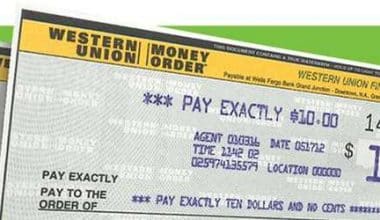A multi-line phone system connects you and everyone in your company quickly and simply, helping you to get calls to the proper person faster. For a small business, a multi-line phone system can be a 2-line system, a 4-line system, a 6-line system, etc. We’ll look at each of these in this chapter.
What Is a Multi-Line Telephone System?
A multi-line phone system allows you to manage two or more calls at the same time. Employees can use it to put calls on hold, dial internal or external numbers, and return to the line.
Multi-line phones differ from single-line phones, which can only hold one phone call at a time. Similarly, they are issued a single phone number. Callers will be routed to voicemail or a busy signal if the line is in use.
When it comes to hiring new personnel and expanding your client base, the single-line method stifles growth.
How Does A Multi-Line Phone System Work?
A multi-line phone system establishes an internal phone network with distinct extensions. This feature allows operators to hold incoming calls while also viewing the real-time presence of other extensions.
Traditional and cloud-based phone systems both handle multiple telephone lines. You should understand the distinctions between each type of phone system.
Traditional Multi-Line Phone Systems
There are two types of traditional multi-line phone systems:
The first is where a single landline uses existing lines to give two-line capabilities. Yellow and black cables would be used to connect these to phone jacks. To utilize it, you’ll need to pay for an additional phone line from the phone company. The flash button on analog handsets can be used to swap lines and place calls on hold.
A Private Branch Exchange, or PBX, is the second type. It supports many phone lines via standard landlines or trunks. Voicemail, call forwarding, and speakerphone are among the phone functions available. You have a PBX if you have to call 9 to reach an outside line.
When your incoming lines are busy, callers will receive a busy signal. This constraint is a significant worry for a growing firm.
Desk phones with numerous lines are required for traditional phone networks. These phones come with features such as headsets and cordless phone (DECT) capabilities. However, its popularity is dwindling in favor of its rival: VoIP.
Cloud-Based Multi-line Phone Systems
The cloud-based phone system is the traditional phone system’s replacement. They provide multi-line capability with infinite scalability. Furthermore, they incorporate several on-demand business functions.
What makes this possible?
Voice over Internet Protocol is used in this type of multi-line phone system. With VoIP, you can completely avoid the local phone company. Nextiva, a dependable business VoIP service, offers a comprehensive phone system in the cloud with exceptional uptime.
Calls are converted into data packets via a cloud phone system. It sends them to a data center nearby. The IP phone turns the audio into the sound you hear in milliseconds. The VoIP company offers a virtual PBX for its business-class customers.
When it comes to multi-line phone systems, the term “virtual” is crucial.
Phone extensions are not the same as physical phone lines. There are also no phone jacks. They are logical representations of a cloud PBX queuing or parking calls. Each line can queue up to 525 calls. That’s a lot of phone calls!
You can have as many lines as you like as long as you have a reliable internet connection.
Types of Multi-line Phone Systems
Choosing phones for your business does not have to be a game of chance. There are several phone kinds that can be used with your multi-line phone system in your small business. More lines do not automatically imply better.
#1. Two-line phone systems
A two-line phone system is appropriate for small businesses with a steady stream of calls.
Examples of business use-cases that could benefit from two lines include:
- Solopreneurs that have one line for sales and another for service.
- Small offices with only two staff, each with one line.
- Small retailers will accept incoming calls, with one line dedicated to management.
Two-line VoIP desk phones can be had for around $80. The Poly VVX 150 is an excellent choice for individuals on a tight budget.
#2. 4-line phone systems
A four-line phone system is ideal if your employees need to place calls on hold or warm transfer.
Consider the following examples of four-line phones in use:
- Small businesses have sales representatives and account managers to handle incoming consumer calls.
- Customers, vendors, and employees are contacted through customer service teams that include support representatives.
- Receptionists who must answer and transfer several incoming phone calls.
#3. 6-12 line phone systems
The next tier of multi-line phones outperforms lower-grade VoIP phones. They have quicker chipsets, more memory, and even more customizing options than regular phones. They provide advanced features at this level, such as line presence and softkeys.
These are the best options for these company requirements:
- Executive assistants who screen and need to know the status of their executive’s line.
- Team supervisors who must monitor many calls at the same time.
- Senior account executives who need to consult with management about inventory and price.
How to Install a Multi-Line Phone System for Your Small Business
If you decide on a standard phone system, the phone provider will have to install each line. You’ll also need to budget for an on-premise PBX and a specialist to install everything. Desk phones must be configured to communicate with your PBX.
A cloud-based multi-line phone system is a less complicated option. It just takes approximately 20 minutes and requires only an internet connection.
Here are the four stages to getting your virtual phone system with numerous lines up and running:
- Select a business telephone service. Choose a package depending on your company’s requirements.
- Make phone extensions. You can begin adding internal extensions for each of your team members to your admin portal. This facilitates internal dialing and call transfers.
- Save your phone greetings. Upload your own greeting or use one from your phone (or computer). When people call your company, make a good first impression.
- Start making and answering calls: You don’t have to wait for a VoIP phone to arrive if you don’t have one yet. Begin with a softphone app on your iOS or Android smartphone.
In less than an hour, you’ll have a multi-line phone system.
Advantages of Using a Multi-Line Phone System for Your Small Business
#1. Cost savings
Going with a cloud phone system is the ideal approach to supply your team with various phone lines.
On average, a landline phone system based on the Plain Old Telephone System (POTS) costs $50 per line. That calling plan is mainly only for local calls. It also lacks any of the business phone capabilities that are often used by businesses nowadays.
It’s no news that corporations have abandoned AT&T, Verizon, CenturyLink, and Frontier in favor of the cloud. They can save up to 65% on their communication expenses.
VoIP phone systems are cheaper than $20 per line per month. Because of the unlimited calling, you won’t have to pay for installation, a PBX server, or toll rates.
#2. Reliability
Your phone system must be dependable and secure. On-premises phone systems expose you to power or network interruptions.
For redundancy, VoIP phone systems rely on numerous data centers. Your firm will continue to operate normally regardless of what happens to the phone infrastructure.
Furthermore, leading service providers follow standards such as PCI, SOC 2, and HIPAA. Instead of worrying about security audits, concentrate on your consumers. Hooray!
#3. Flexibility
Suppose you’re hiring remotely, building new offices, or converting to a hybrid workforce. In that circumstance, a phone system that allows employees to work from anywhere is required.
They are restricted to the office by a standard multi-line phone system. It makes communication difficult when they operate remotely.
A cloud-based phone system allows you to provide your employees with the capabilities they require. They can conduct their work from the comfort of their cell phone and an internet connection.
#4. Scalability
A cloud VoIP system is your best bet if your company is expanding and you don’t want technology to get in the way. It makes it simple to install phone lines. Adding extra locations to the same phone system is also possible without any technical knowledge.
When there is a growth in demand or headcount, your phone service will not keep you down. Consider call queuing as another option for scaling your customer care workforce.
Cloud phone services such as Nextiva guarantee 99.999% uptime and availability.
#5. Convenience
A multi-line phone system makes life easier for both you and your staff. They become more productive and have the potential to move the firm forward.
Customers will trust you because of features like auto attendants and toll-free phones. It is possible to set up an inbound call center in less than a day.
Gone are the days when your phone carrier would abandon you. If you ever need assistance, please contact us at any time.
Top 8 Best Small Business Multi-Line Phone Systems
Running a small business is difficult enough without having to worry about your phone system. Purchasing a multi-line phone system facilitates internal and external communication in your small business, far more than a single-line handset.
- Best Overall: Nextiva X-835
- Best for Small Business Expansion: RCA 4-Line Small Business System
- Panasonic KX-TG958 – Best for Dependable Service
- Grandstream GXV3370 – The Best Video Calling Device
- Best for Sales and Customer Service: MiVoice 5330e IP Phone
- AT&T 2-Line Corded Telephone – Ideal for Home Office Work
- Best for an intuitive interface: Fanvil X7
- Yealink SIP-W52P – Best for Cordless Communications
4-Line Phone System For Small Business
A four-line phone system is a popular choice for companies trying to boost productivity, communication, and efficiency. A 4-line phone system is a unified communications solution that allows a small business to seamlessly transfer calls and communicate both internally and externally.
What Is A 4-Line Phone System?
A 4-line phone system is a multiline business phone system that connects four analog (or landline) phone lines in your office. Internal or external lines can be used. Internal lines allow employees in your workplace to interact with one another, whereas external lines let clients, vendors, or anybody else outside the company communicate with you. If you need more than four lines, most systems will allow you to connect and service extra phones in groups of four.
Four-line phone systems differ from traditional phone systems in that they allow multiple parties to talk on the phone at the same time, whereas traditional phones only allow two parties to talk at the same time.
How Does A 4-Line Phone System Work in a Small Business?
A four-line phone system works in the same way as a regular one-line phone does. Voice data packets are conveyed to recipients over telephone network lines. All four lines use the same wire and receive the same calls, forming a system between the four phones.
Four-line phone systems are made possible by an extension that allows three additional phones to be connected to the line. This extension is normally cordless, allowing the second, third, and fourth phones to be installed independently of the first. Instead of grouping them all together, this lets employees in each four-line group have phones at their own desks.
Do You Need a 4-Line Phone System for Your Small Business?
Because a four-line system is a subset of a multiline phone system arrangement, it requires a more precise set of circumstances to justify the choice. Because these systems are only available in groups of four, you should anticipate scaling up by four every time you need to add a line. The following businesses may benefit the most from a four-line phone system:
- Entrepreneurs who desire to separate their personal and professional lives
- Small enterprises with two or more employees who require regular telephone connectivity
- Any company that receives a significant amount of calls at specific times
- Offices with four or more employees who require constant phone access
- Teams of four that must be on calls together from their own desks on a regular basis
- A small company with a few employees who require multiple lines for their job function, discrete team duties, and general business access.
- Situations in which several minor brands are managed from the same headquarters
- Businesses with older PBX systems that do not want to experience latency or jitters as a result of a poor internet connection
Can One Phone Number Have Multiple Lines?
Yes, one number can have multiple lines.
How Do You Transfer A Call On A Multi-Line Phone?
- Select the Transfer option.
- Dial the number to which you wish the call transferred.
- To end the call, press the Transfer button once again. If your phone’s display screen includes a Complete button, you will press it to end the call.
What Are The Three Types Of Phone Systems?
The three types of phone systems are Hosted telephone systems, On-premise PBX telephone systems, and Hybrid VoIP telephone systems.
Can I use a multi-line phone system for my small business?
Yes, multi-line phone systems are suitable for small businesses. They are designed to be scalable, so they can be customized to meet the specific needs of your business.
What is the difference between PBX, Hybrid, VoIP, and Cloud-based multi-line phone systems?
PBX systems are traditional telephone systems that use physical hardware to route calls. Hybrid systems combine traditional hardware with digital features. VoIP systems use the internet to make and receive calls. Cloud-based systems are hosted on remote servers and accessed via the internet.
How much does a multi-line phone system cost?
The cost of a multi-line phone system can vary greatly depending on the type of system, the number of lines required, and the features included. A small business can expect to pay anywhere from a few hundred dollars to several thousand dollars for a multi-line phone system.
In Conclusion
You can communicate from anywhere with the best small business multi-line phone systems. As well as handling conference calls, they can provide phone connections to remote employees.
It is important to consider your company’s needs both now and in the future when choosing a company phone system. How would you like to interact with your customers? You will either succeed or fail based on your communication platform.
Frequently Asked Questions
What is the main advantage of using a multiline phone system?
The main advantage of using a multiline system is that it allows multiple to be on the same phone at the same time.
How many cordless phones can you have on one line?
You can have up to 6 cordless phones on one line.
How many phone lines does a small business need?
A small business needs a minimum of 10 phone lines to facilitate sales calls, faxes, online collaboration, teleconferences, client management, and administration.
{
“@context”: “https://schema.org”,
“@type”: “FAQPage”,
“mainEntity”: [
{
“@type”: “Question”,
“name”: “What is the main advantage of using a multiline phone system?”,
“acceptedAnswer”: {
“@type”: “Answer”,
“text”: “
The main advantage of using a multiline system is that it allows multiple to be on the same phone at the same time.
“
}
}
, {
“@type”: “Question”,
“name”: “How many cordless phones can you have on one line?”,
“acceptedAnswer”: {
“@type”: “Answer”,
“text”: “
You can have up to 6 cordless phones on one line.
“
}
}
, {
“@type”: “Question”,
“name”: “How many phone lines does a small business need?”,
“acceptedAnswer”: {
“@type”: “Answer”,
“text”: “
A small business needs a minimum of 10 phone lines to facilitate sales calls, faxes, online collaboration, teleconferences, client management, and administration.
“
}
}
]
}
Related Articles
- BEST BUSINESS PHONE SYSTEMS: 2023 Best Business Phone System Reviews (Updated)
- PHONE SYSTEMS: 11+ Phone Systems for any Business & All You Need
- VOIP PROVIDERS: 21+ Top Best Services For any Business in The UK (Free & Paid)
- VIRTUAL PHONE SYSTEMS: The Top Best Virtual Phone Systems For any Business (+ Detailed Guide)
- SOCIAL SECURITY HOURS: How To Apply/Complete Guide
References
.






